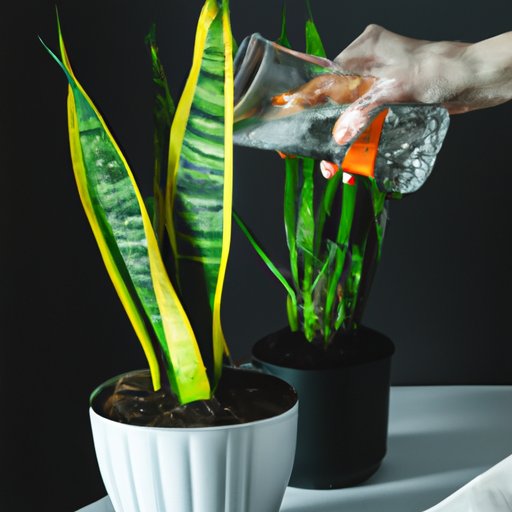Introduction
Snake plants, also known as sansevieria or mother-in-law’s tongue, are popular houseplants that are known for their low maintenance and easy care requirements. These plants are incredibly resilient and can survive in almost any condition, making them an excellent choice for beginners. Despite their toughness, there are still certain steps you should take to ensure your snake plant stays healthy and vibrant.

Providing the Right Amount of Light
Snake plants prefer bright, indirect sunlight. Place your snake plant in a spot that receives several hours of natural light each day, such as near a window or in a sunroom. Avoid direct sunlight, which can scorch the leaves and cause them to become bleached or yellow. If you don’t have access to natural light, you can provide supplemental light with artificial grow lights.
Watering Regularly
Snake plants are very drought tolerant, so you don’t need to water them too often. Water your snake plant about once a week during the growing season (spring and summer) and about once every two weeks during the winter months. Make sure the soil is completely dry before you water again. Too much water can lead to root rot, so be careful not to overwater your plant.
Using the Right Soil
The best soil for snake plants is a well-draining potting mix. A combination of peat moss, perlite, and/or vermiculite is ideal. You may also want to add some slow-release fertilizer to the mix to give your snake plant an extra boost. Avoid using soil from your garden, as it can contain pests that can harm your snake plant.
Pruning and Dividing as Needed
Snake plants can benefit from regular pruning and division. Trim off any dead or yellowing leaves to keep the plant looking its best. You can also divide your snake plant every few years to promote growth and prevent overcrowding. To do this, carefully remove the plant from its pot and separate the roots into smaller sections. Replant the sections in individual pots with fresh potting mix.
Feeding Once a Year
Snake plants don’t need to be fed very often. Once a year is usually enough. When you do feed your snake plant, use a balanced fertilizer such as 10-10-10. Apply the fertilizer according to the instructions on the package. If you’re not sure when to apply the fertilizer, early spring is usually a good time.
Monitoring for Pests
Snake plants can sometimes be affected by pests such as mealybugs, spider mites, and scale insects. Watch for signs of infestation, such as white spots, webbing, or discolored leaves. If you notice any of these signs, treat the plant with an insecticidal soap or neem oil solution. Be sure to follow the instructions on the product label.
Conclusion
Caring for a snake plant isn’t difficult, but there are a few key steps you should take to ensure your plant stays healthy and vibrant. Provide your snake plant with bright, indirect sunlight, water regularly, use the right soil, prune and divide as needed, and feed once a year. Additionally, monitor for pests and treat any infestations promptly. With proper care, your snake plant will thrive for many years.


